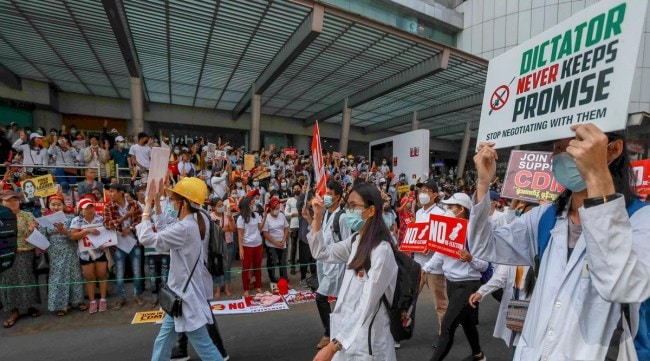Opinion Amid global apathy, ASEAN can help in resolving the Myanmar crisis
ASEAN is perhaps the only regional actor that Myanmar attaches importance to. This makes the regional bloc a critical actor in any externally driven role in facilitating dialogue with Naypyidaw
 The initial global attention that the Myanmar crisis received has shifted to conflicts in other regions that pose “greater” geostrategic implications.
The initial global attention that the Myanmar crisis received has shifted to conflicts in other regions that pose “greater” geostrategic implications. Written by Khriezo Yhome
Myanmar’s civil war is now in its fifth year. The Southeast Asian nation has been witnessing one of its worst internal conflicts since its inception in 1948. According to the UN, nearly 7,000 people have been killed since the military coup, over 3.5 million people are internally displaced, and 21.9 million people are in need of humanitarian aid. The Myanmar junta has been rapidly losing ground to the opposition forces, with the regime controlling only about 40 per cent of territory, particularly in the urban centres, while the ethnic armed groups control most of the peripheries.
The initial global attention that the Myanmar crisis received has shifted to conflicts in other regions that pose “greater” geostrategic implications. The implicit assumption here is that the internal conflict in Myanmar would harm the country and the interests of its immediate neighbours. But even regional actors have failed to curtail the civil war. With conflicts in Eastern Europe and West Asia intensifying and the world order grappling with the increasing uncertainties of the Trump era, Myanmar is likely to remain at the bottom of global priorities in the foreseeable future. Against this backdrop, pushing the Myanmar case for global attention is unlikely to produce much result. The focus, then, should be brought back to regional actors who should take some responsibility to ensure stability in their own backyard.
ASEAN (Association of Southeast Asian Nations) has proved itself to be a credible actor in managing and balancing regional power competition. The same can’t be said about its role in mediating a regional conflict like in Myanmar. ASEAN’s role in Myanmar’s political crisis has come under scrutiny since the country became a member state in the late 1990s. Owing to geographical proximity, China, India, Thailand, Bangladesh, and Laos have been the most impacted with many of them hosting several thousands of Myanmar’s refugees. The two Asian giants, China and India, and two members of ASEAN, Thailand and Laos, hold the key to any external role in Myanmar. Thus far, their contributions have been guided by divergent political interests and the overarching goal to safeguard the borders.
There was some progress when in December 2024, a discussion was held by foreign ministers and high-level representatives from Myanmar, Laos, China, India, Bangladesh and host Thailand. But the initiative came to an end almost as soon as it began. China on its own initiated several rounds of talks between the junta and the ethnic armed groups but these have not led to peace. Despite its effectiveness, ASEAN is perhaps the only regional actor that Myanmar attaches importance to. This makes the regional bloc a critical actor in any externally driven role in facilitating dialogue with Naypyidaw.
Any regional solution without China and India may not be durable. A new regional approach need not start from scratch as there is already a template in the form of ASEAN’s Five-Point Consensus (5PC). Work on it can be with three of the 5PC, namely: Immediate cessation of violence, unhindered access for delivery of humanitarian assistance, and dialogue involving all parties in conflict. The other two are the appointment of a special envoy and the special envoy’s visit to Myanmar to meet with all parties.
In what would be a redesigning of the regional approach, ASEAN can take on the leadership role and invite China and India to form an ASEAN Plus-Two for Myanmar. Under its auspices, the special envoy of ASEAN can invite special envoys from China and India to work out a plan on how to implement the main three points of the 5PC. To strengthen the process, the ASEAN’s principle of “Myanmar-led, Myanmar-owned” must guide the process. All of Myanmar’s immediate neighbours may refrain from initiating unilateral engagement with the junta or the opposition forces. This will allow all parties in conflict in Myanmar to come forward and come together for dialogue.
The writer is Editor and Senior Fellow, Asian Confluence





